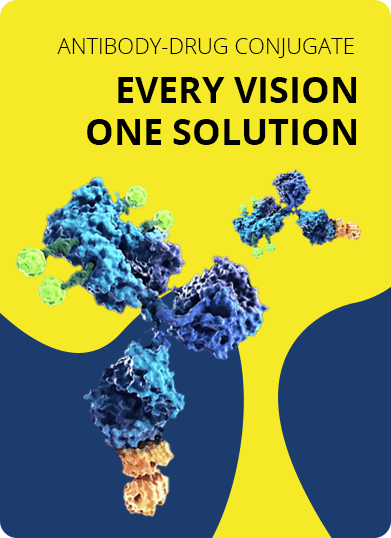- Home
- ADC Development
- DrugLnk™ Custom Linker-Payload Synthesis
- Drug Module Synthesis
- Microtubule Toxin Synthesis
- Tubulysin Synthesis
Tubulysin Synthesis Service
Creative Biolabs is a pioneer in antibody-drug conjugate (ADC) development and our science team provides customized ADCs with tubulysins as payload drugs using suitable linkers and optimized conjugation strategies.
Tubulysins, originally isolated from myxobacteria, are a series of antimitotic tetrapeptides discovered by Hofle and co-workers in 2000. Functionally similar to dolastatins, tubulysins are among the most powerful cell division inhibitors reported until now. Due to their ability to inhibit tubulin polymerization, tubulysins exert a potent anti-proliferative activity against human cancer cells, even the drug-resistant cancer cells. So far, 14 different tubulysin isoforms have been reported and their conserved core structure, containing a secondary alcohol or acetate at C-11, is comprised of a L-isoleucine (Ile), a tubuvaline (Tuv) and a N-methylD-pipecolic acid (Mep) unit. All natural tubulysins have a special N,O-acetal and either a tubutyrosine (Tut) or a tubuphenylalanine (Tup) at the C-termini for their biological function. Meanwhile, it has been demonstrated that the N,O-acetal can be replaced by a plain alkyl group to offer N-14-desacetoxytubulysin H without any loss in potency.
Tubulysins Mode of Action (MOA)
Tubulysins inhibit cancer progression by their powerful microtubule inhibition (MTI) capabilities. Upon release, tubulysis rapidly decompose the cytoskeleton and mitotic machinery of dividing cancer cells, resulting in apoptosis. With their remarkable cytotoxic activity, tubulysins have been exploited to target numerous human cancer lines. What’s more, tubulysins have also been demonstrated to be effective on multi-drug-resistant (MDR) carcinoma cell lines. Taken together, with their high cytotoxic potency against a broad spectrum of cancer cells, especially the MDR cells, tubulysins have been a favored choice as payloads for the selective targeting of cancer cells through ADCs and Small Molecule Drug Conjugates (SMDCs).
Tubulysins-based ADCs
Taking advantage of the high folate receptor expression in a number of cancers, tubulysin B–folic acid conjugate (EC0305, 79) was the first targeted drug involving tubulysin. Since then, multiple ADCs carrying tubulysin analog payloads have been exploited. Tubulysin D, one of the most potent member of the tubulysins family, is able to cause multipolar spindles and it was initially conjugated with polymers to offer proof-of-concept studies in preclinical models. Currently, several ADCs bearing tubulysin D payload are under active development. With high target specificity empowered by monoclonal antibodies, these ADCs deliver tubulysin selectively to cancer cells, therefore averting toxic effects on normal tissues.
With our well-established "DrugLnk" organic synthesis platform, the experienced scientists here at Creative Biolabs is dedicated to help you develop tubulysin-linker complexes using readily available or customized linkers for ADC developments in a timely and cost-effective manner. Our customarily tailored services and high quality products will contribute greatly to the success of your projects.
Creative Biolabs also provides other various services regarding ADC development. Please feel free to contact us for more information and a detailed quote.
For Research Use Only. NOT FOR CLINICAL USE.

Online Inquiry
Welcome! For price inquiries, please feel free to contact us through the form on the left side. We will get back to you as soon as possible.
